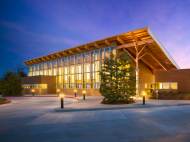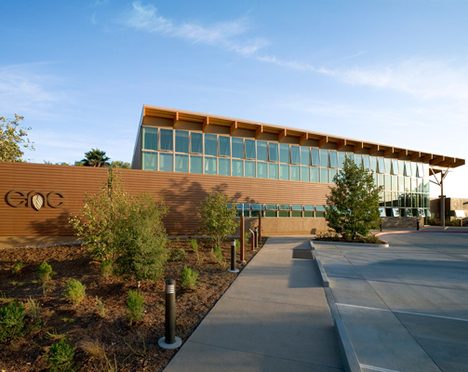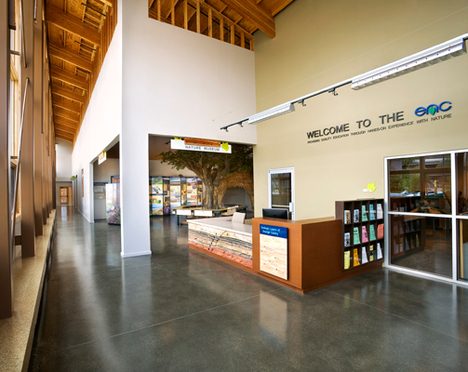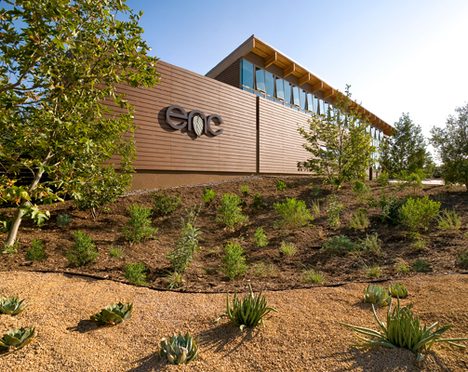Green architecture – Enviromental Nature Center
 Since the Environmental Nature Center beginnings in 1971, it has utilized makeshift buildings and trailers to accommodate its classroom and gallery. These days, the building consists of a new classroom, gallery, and office space that showcase smart, sustainable design practices and strategies to teachers, students and the public. By using a universal, integrated design approach in which architects, interior designers, landscape architects and engineers work together from the beginning, the LPA was able to create an outcome that was unified and sustainable from the ground up.
Since the Environmental Nature Center beginnings in 1971, it has utilized makeshift buildings and trailers to accommodate its classroom and gallery. These days, the building consists of a new classroom, gallery, and office space that showcase smart, sustainable design practices and strategies to teachers, students and the public. By using a universal, integrated design approach in which architects, interior designers, landscape architects and engineers work together from the beginning, the LPA was able to create an outcome that was unified and sustainable from the ground up.
“The ENC provides the community with natural science and social science education programs, preserved open space, and a sanctuary from the pressures of everyday life,” describes ENC executive director, Bo Glover. “Even the entry desk is educational, modeling the geologic layers of Orange County, which include a seismic fault and embedded fossils.”
The Building and Learning Center sits on a 3.5-acre natural preserve that features 15 native Southern California plant communities, wildlife habitats, walking trails and a butterfly garden. Guests learn how to implement sustainable features in their lives while the museum’s displays illustrate California’s biodiversity.
Glover wanted the sustainable elements incorporated throughout the learning center to demonstrate to students and visitors that green design is the wave of the future. “LPA understood that we were in need of a building to complement our commitment to natural science education,” says Glover. Mission accomplished.
The new Building and Learning Center is used as a teaching tool that helps students grasp and learn about the elements and processes involved with sustainable design. In fact, the entire project communicates stewardship and respect for resources and the natural environment. ENC Design Principal Rick D’Amato designed the building with a reason and a purpose.
“Everything you see has a sustainable story,” explains D’Amato. “We coupled sustainable technologies with authentic architecture to create a place that welcomes guests and educates them about the benefits of environmentally conscious design.”
Sustainable features at the 836 square meters Building and Learning Center include the North/South orientation of the building, which helps the Center to harvest natural daylight as well as the cool ocean breezes. The use of natural ventilation helps eliminate the need for air conditioning of the building. The building uses photovoltaic roof panels to convert light into power and provide for 95 percent of the building’s electrical needs. It also has bicycle storage and shower facilities; drought tolerant, native landscaping; fixtures that promote water conservation such as waterless urinals and low-flow faucets; efficient storm-water management and daylight harvesting.
The extensive use of recycled and recyclable materials includes: insulation made of recycled blue jeans; natural linoleum for countertops-100 percent organic and recyclable; composite wood for exterior skin made from sawdust and natural resin; pressed organic materials for millwork and shelving units; natural concrete; carpet tiles with high recycled content; and recycled fabrics/finishes for furnishings and work stations.
This building showcases efficient sustainability and demonstrates that any building can be green, cost-effective and beautiful. More importantly, it is a great example to new generations, showing the right path to better future. It also serves to the community, spreading the importance of ongoing education, the natural environment and its significance in our lives.












Leave your response!